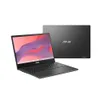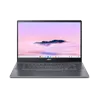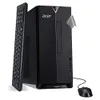I paired my Pixel with a Chromebook — and MacBooks could learn a thing or two
Chromebook's Phone Hub is incredibly feature-packed
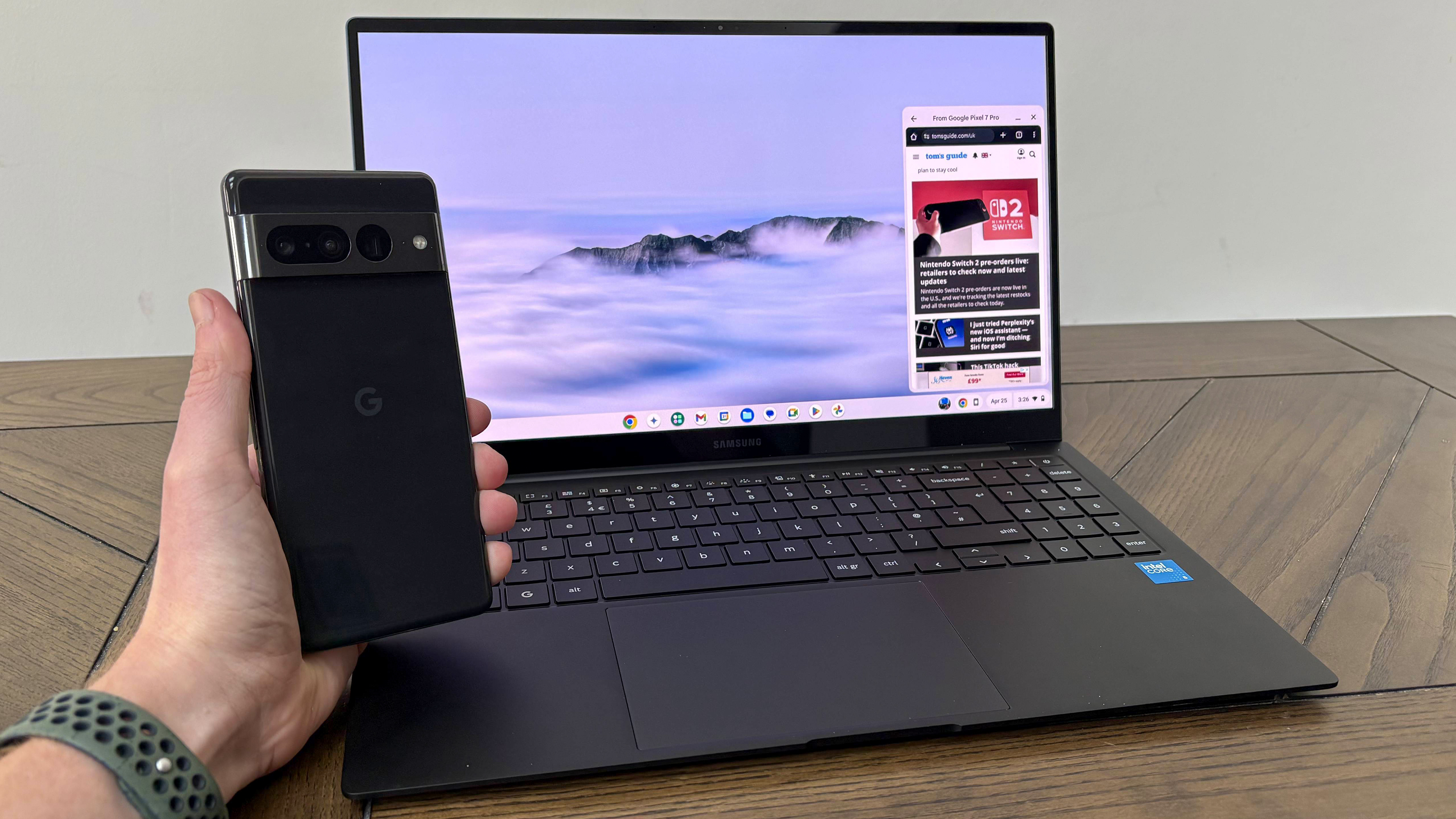
I wouldn't usually think a Chromebook could go toe-to-toe with a MacBook or a Windows PC, but pair a Pixel with it, and there's a whole new category it conquers.
Let's be clear: Google's take on laptops thrive at being affordable machines for basic productivity, and I've become a fan of what they've been able to achieve — especially with its Chromebook Plus lineup.
Can they match the raw power of a Windows laptop or MacBook? Not a chance. But when it comes to bringing another part of its ecosystem into the mix via Phone Hub? Now we're talking.
So far on my device ecosystem journey, I've matched my iPhone 16 with a MacBook and even paired that iPhone with a Windows PC. And I have to say, using my Pixel 7 Pro with a Samsung Galaxy Chromebook Plus has shown me how much Google has nailed connectivity between devices.
How so? Well, keeping in mind that the best Chromebooks are budget-friendly machines compared to their Windows and Mac rivals, the Phone Hub tool is packed with intuitive, easy-to-use connectivity features. Plus, streaming an app from a Pixel straight to a Chromebook never gets old — and that includes games.
That's not to knock what Apple's suite of Continuity features can do, as you're also able to mirror your iPhone on Mac and more. But the cross-connection between a Pixel and Chromebook showcases that you don't have to pay extra to enjoy a seamless ecosystem of devices.
This isn't solely for Pixel users, as Android phones can unlock many of the same benefits on a ChromeOS laptop, too (take that, Apple). From opening recent Chrome tabs and jumping on a personal hotspot with a click of a button to even locating your phone, there's a lot to praise about this connection between a phone and a laptop.
After using my Pixel with a Chromebook, here are the features I got a kick out of — and you shouldn't miss out on them either.
Pairing made simple
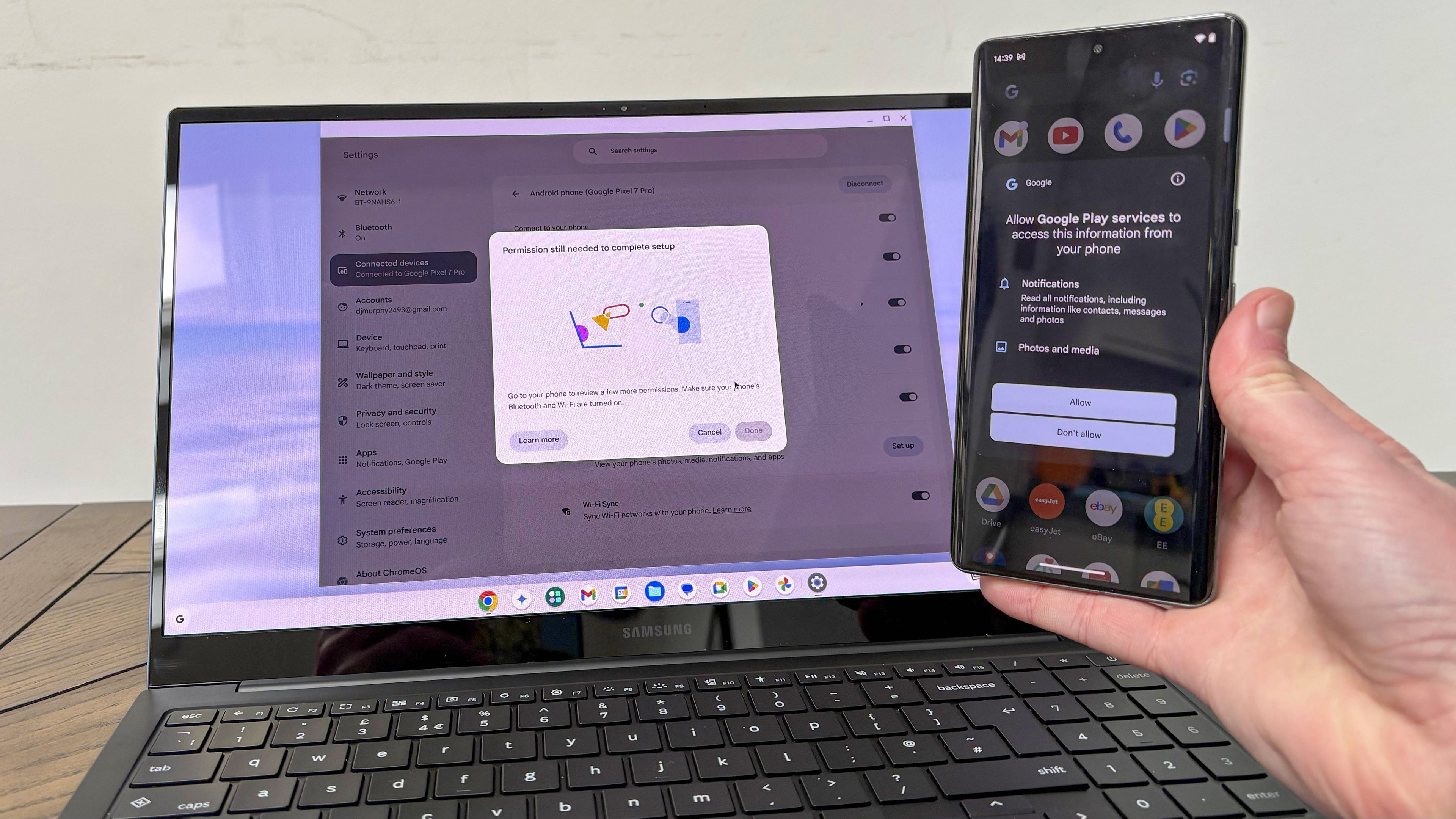
As with most brands with multiple devices linked together in a grand ecosystem, Google makes a connection immediately noticeable when its products are close to one another (call it a "Spidey sense" of sorts).
That happens when a Chromebook picks up that you use a Pixel. By using Fast Pair, I was immediately able to connect the Pixel 7 Pro to the Samsung Galaxy Chromebook Plus, and I was off to the races. There are a few permissions you have to accept, but as long as both devices have Bluetooth on and share the same Wi-Fi network, they can instantly interchange between one another.
This wasn't unlike me pairing my iPhone 16 with a MacBook Air, but the Pixel-Chromebook combo gets some kudos for a very simple implementation: there's a Phone Hub icon right on the Chromebook's taskbar.
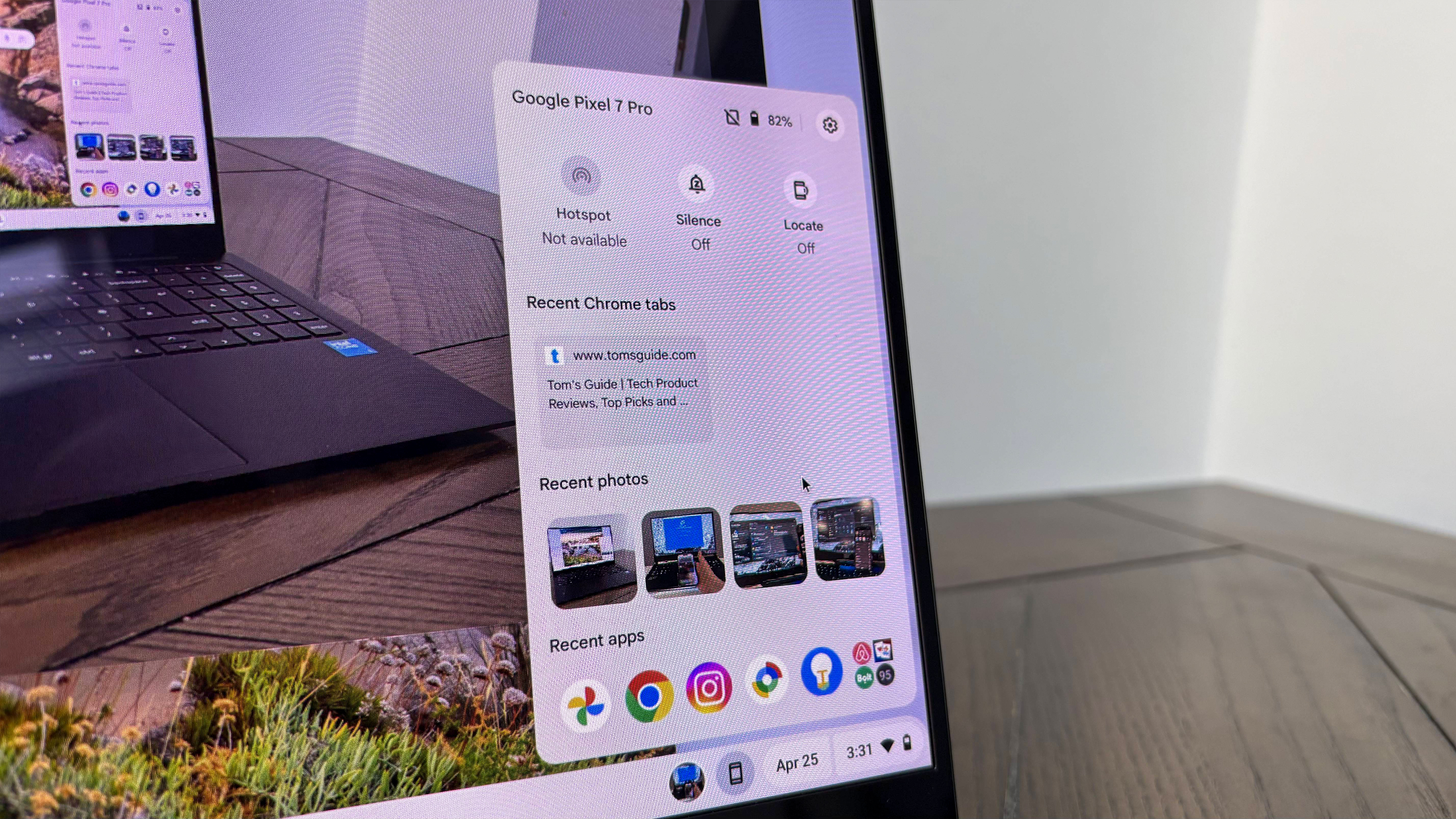
It's here where you can easily interact with features on your Pixel right from your Chromebooks screen. I can check my phone's battery life, silence it, connect to its hotspot if I'm in need of internet access (and for ChromeOS, you will) and even locate it.
I know, these are minor features that may or may not be used from time to time, but if it means I don't have to take out my Pixel to check its battery, turn on silence mode if it's making a racket and even find out where it is, all on the laptop, that's a bonus.
All that is always easily accessible — as it should be — playing to the strengths of what Chromebooks do best: simplicity.
But that's just the scratching the surface, as the trump card under Phone Hub's sleeve is being able to stream apps from a Pixel right on a Chromebook.
Your apps on screen
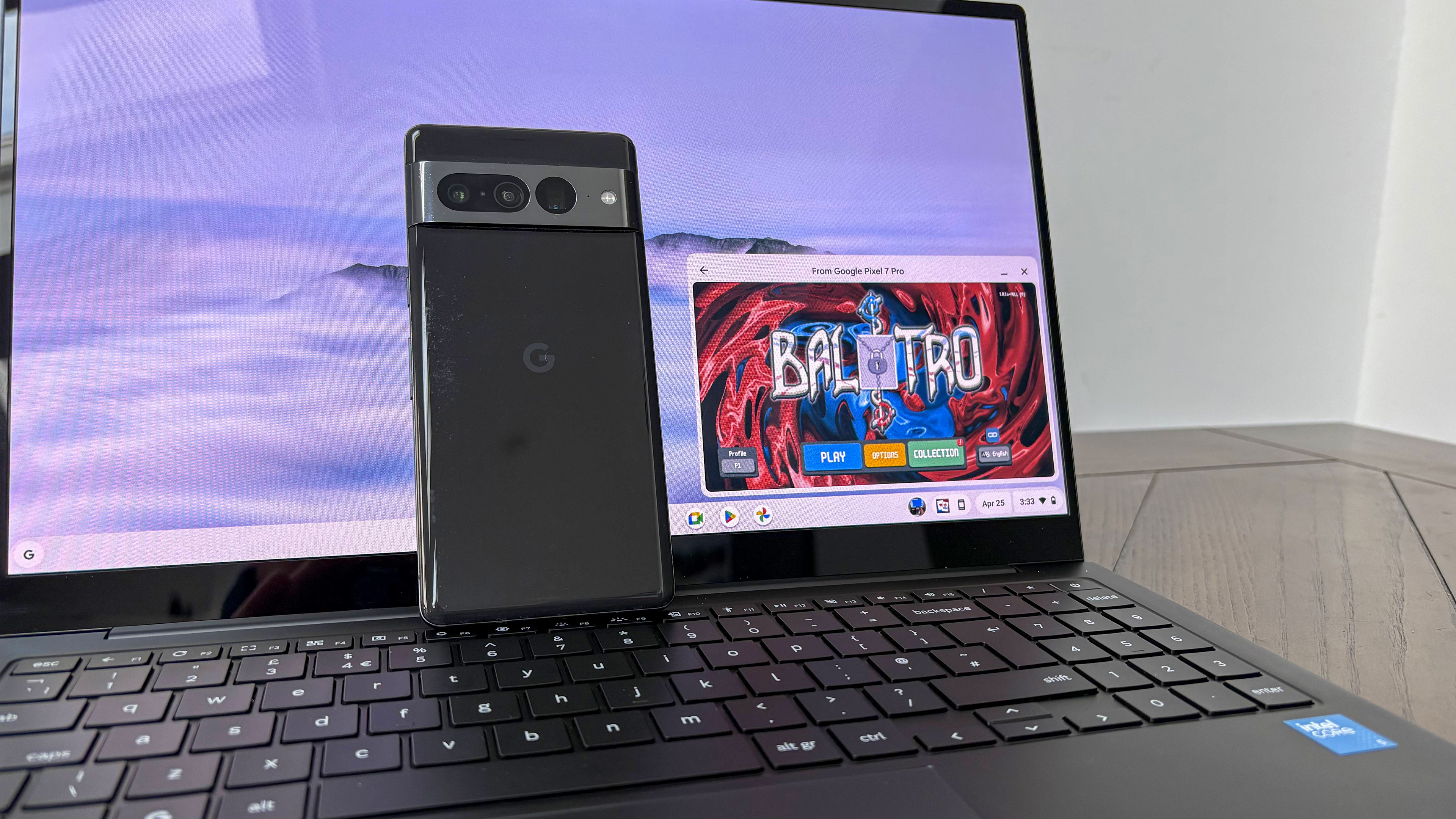
Who doesn't want more screens? Big, small, however they come, having an extra way to multitask on one device is a boon. That's why I've enjoyed using iPhone Mirroring on my MacBook, as I could access all of its apps without actually using the phone itself.
Well, a Chromebook can do the same with a Pixel. Sort of. Using Phone Hub, you can stream apps on a Chromebook and use them as you usually would. And I mean any app.
So, instead of streaming the whole phone interface like a Mac would with an iPhone, it does specific apps instead. I found this to be an easier way to interact with the apps I want to use on the Pixel, instead of using the phone like usual on a Chromebook. However, there is one caveat, which I'll get to.
By being able to use my apps on the Pixel through the Galaxy Chromebook Plus, I could reply to messages on WhatsApp, open up Google Docs, check out websites on Chrome, scroll through Instagram and, even better, play games.
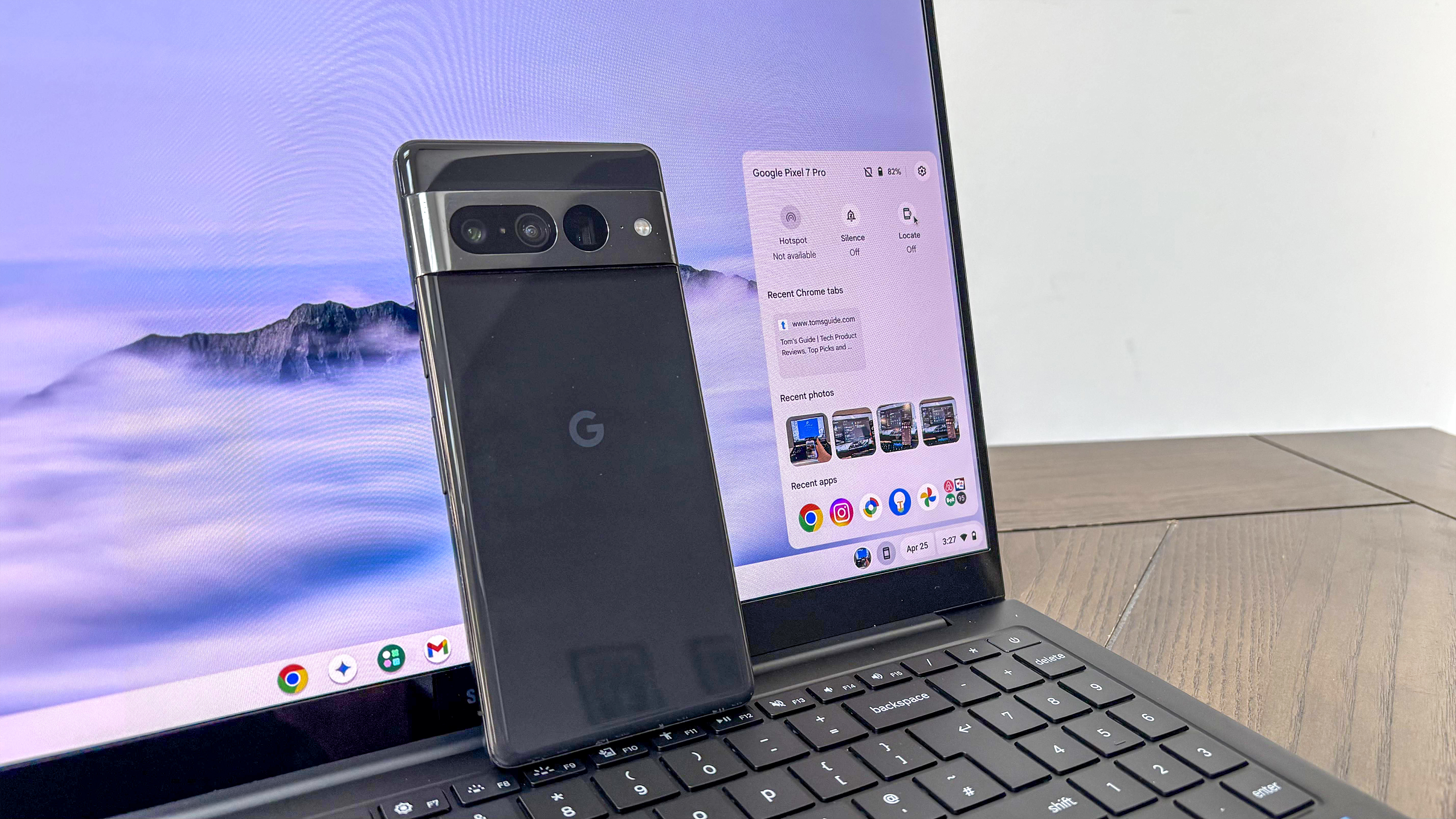
I tried playing Balatro, and Phone Hub even changed the aspect ratio for a better experience. As I found when trying to play games on a Chromebook, these machines aren't exactly built for gaming, but my Pixel 7 Pro can handle many more Play Store games, and it gives me a way to play them on a Chromebook.
This is incredibly handy to have, especially as I'm inclined to watching some YouTube videos while playing that extremely addictive card game. Now, I can do it all on the Chromebook's screen. I've found that stream can stutter a tad depending on my Wi-Fi connection, but it works all the same.
I wish I was able to move the window displaying the streamed app, as it seems to be permanently locked to where Phone Hub is placed (towards the bottom-right side of the Chromebook). This isn't a huge nuisance, but being able to freely move where I want to view my apps would be appreciated.
Regardless, being able to open all my recently used apps, and anymore I want to use, right in Phone Hub on a Chromebook has been a slightly simpler process than when using an iPhone and Mac connection. Not bad, Google.
The sprinkles on top
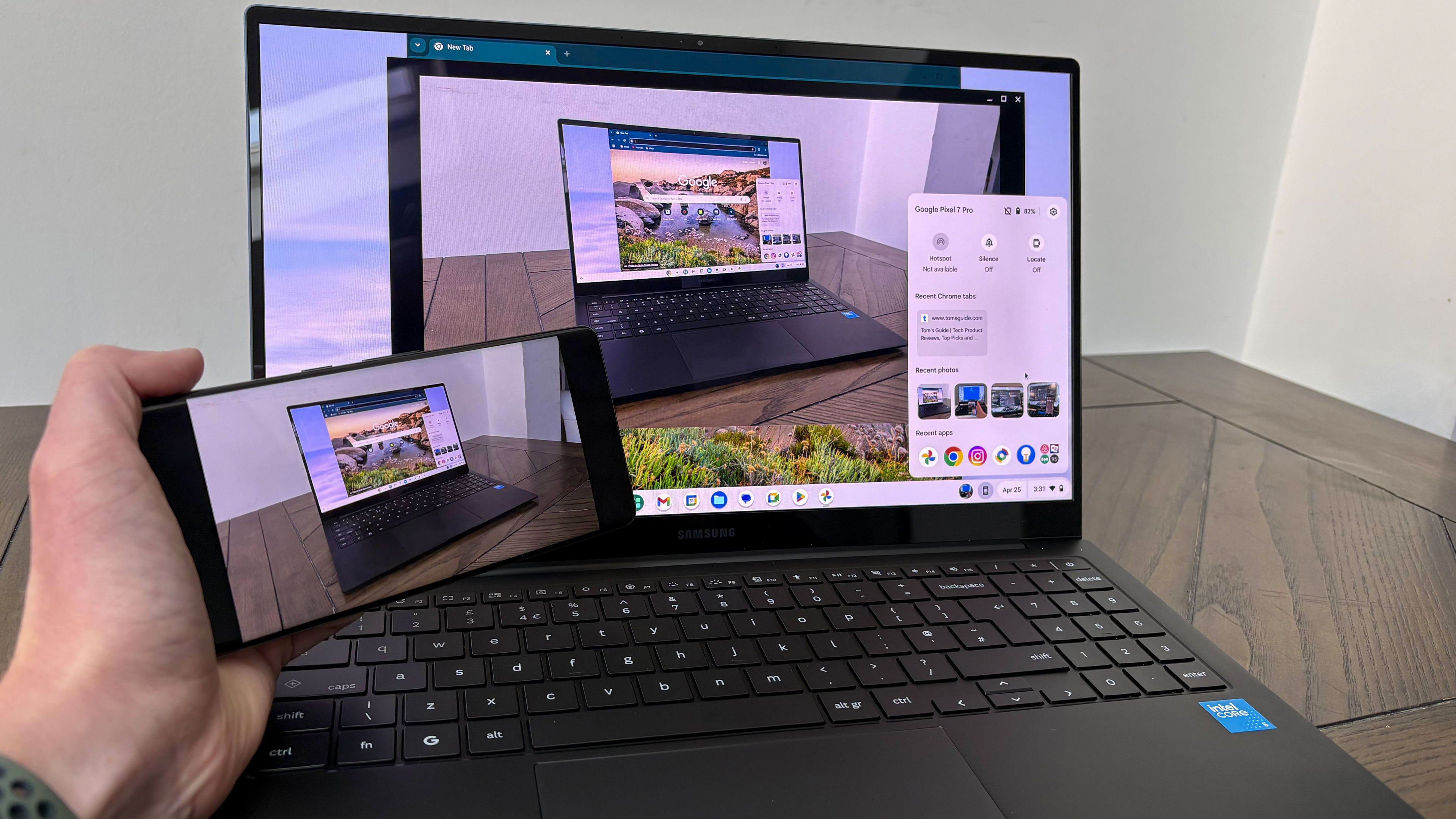
Chromebooks and Pixel devices fully utilize Google's suite of apps, and the connection between these two makes full use of that. Along with being able to check notifications in Phone Hub, it's also able to pull up recent Chrome tabs and photos taken on the Pixel.
I've talked about my joy of being able to quickly pick up where I left off from one device to another, and I've enjoyed features like AirDrop for Windows or Handoff on MacBooks that streamlines my productivity. A Pixel and Chromebook connection can mimic this.
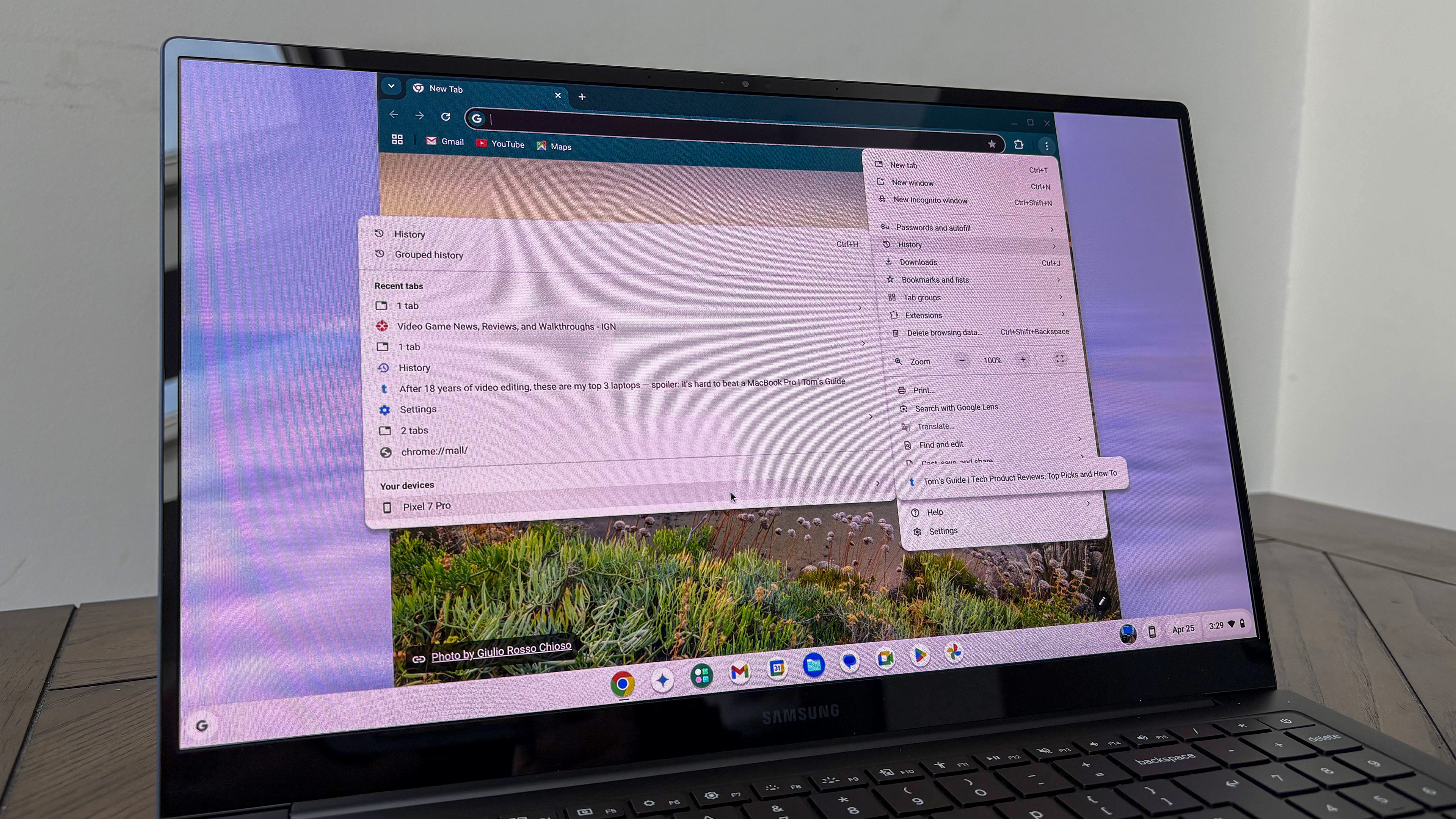
While syncing Google Photos means I can pull up any picture on my Chromebook after taking it on my Pixel 7 Pro, Phone Hub skips a step by allowing me to pick a recent photo I've taken, download it, edit it and send it off. As someone who always snaps photos for reviews and beyond, I'm all for this seamless connection for photos.
Aside from being able to stream apps like Chrome, Phone Hub can also display recent Chrome apps used on a Pixel and I can easily click to resume what I was doing on this page. Just another way of jumping from one device to the other.
Is using a Pixel with a Chromebook worth it?
The lure of matching different devices to one another to gain access to the benefits of an ecosystem is a pricey one, and the features, while helpful, aren't generally worth completely overhauling the setup you already have.
That said, seeing as Chromebooks are the most affordable laptops you can get, and Android phones like the Pixel 9a are aren't set at flagship prices, Google's Phone Hub connectivity is far more accessible than the likes of a Apple's Continuity tool — and its features don't disappoint.
Will I be using a Chromebook as my daily driver just for these tools? Unlikely, but for those that happen to use a ChromeOS laptop and have a Pixel (or Android), it's worth making the most of Phone Hub, and I'm hoping these connectivity features continue to expand.
More from Tom's Guide
- I tried gaming on a Chromebook for a week — and it's better than I expected
- I review Chromebooks for a living, and I install these 5 apps every time
- I tested astrophotography on my Pixel 9a — here's the results
Sign up to get the BEST of Tom's Guide direct to your inbox.
Get instant access to breaking news, the hottest reviews, great deals and helpful tips.

Darragh is Tom’s Guide’s Computing Editor and is fascinated by all things bizarre in tech. His work can be seen in Laptop Mag, Mashable, Android Police, Shortlist Dubai, Proton, theBit.nz, ReviewsFire and more. When he's not checking out the latest devices and all things computing, he can be found going for dreaded long runs, watching terrible shark movies and trying to find time to game
You must confirm your public display name before commenting
Please logout and then login again, you will then be prompted to enter your display name.
